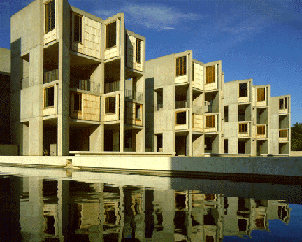Brutalism
 From Conservapedia
From Conservapedia 
Brutalism, or New Brutalism, is a style of architecture which gained some populartity within the architectural community between the 1950s and 1970s. It was pioneered, and the term coined, by the British architects Peter and Alison Smithson, who, with their colleagues in the architectural group 'Team 10' sought to break away from the smoother (and as they saw it compromised) modernism epitomized by the members of CIAM, the International Congress of Modern Architecture (Pioneered in continental Europe by Le Corbusier).
Brutalism (named for the beton brut, raw concrete, admired by Le Corbusier) embodied a return to first principles: raw, undecorated material, typically concrete, left in a rough state with the imprint of wooden shuttering into which the concrete was pouired often visible. Buildings were blocky and lumpish, with symmetry eschewed. At the same time, the Brutalists sought to recreate an 'urbanity', with 'streets' (if often the 'streets in the sky' of slab housing blocks) and public spaces, which they believed the Corbusian vision had abandoned.
One advantage of brutalism is that a building could be built quickly and inexpensively; thus, the style is quite common in government facilities and educational institutions (especially at universities, where during the popularity of brutalism they needed many buildings to house fast growing student populations).
Architectural fashions change, and the public disliked brutalist architecture more or less from its inception, so many prime examples of this style have been demolished in recent years.
Notable Brutalist buildings[edit]
United Kingdom[edit]
- Tricorn Centre, Portsmouth (demolished)
- Trinity Centre, Gateshead (to be demolished late 2008)
- Hayward Gallery and Queen Elizabeth Hall, South Bank arts centre, London
- Robin Hood Gardens housing scheme, Poplar, east London (future subject to debate)
- Park Lane housing scheme, Sheffield (demolished)
- Preston Bus Terminus, Britain's largest bus station (currently under threat of demolition)
External links[edit]
- Brutalism
Categories: [Architecture]
↧ Download as ZWI file | Last modified: 02/18/2023 19:29:34 | 57 views
☰ Source: https://www.conservapedia.com/Brutalism | License: CC BY-SA 3.0
 ZWI signed:
ZWI signed: KSF
KSF